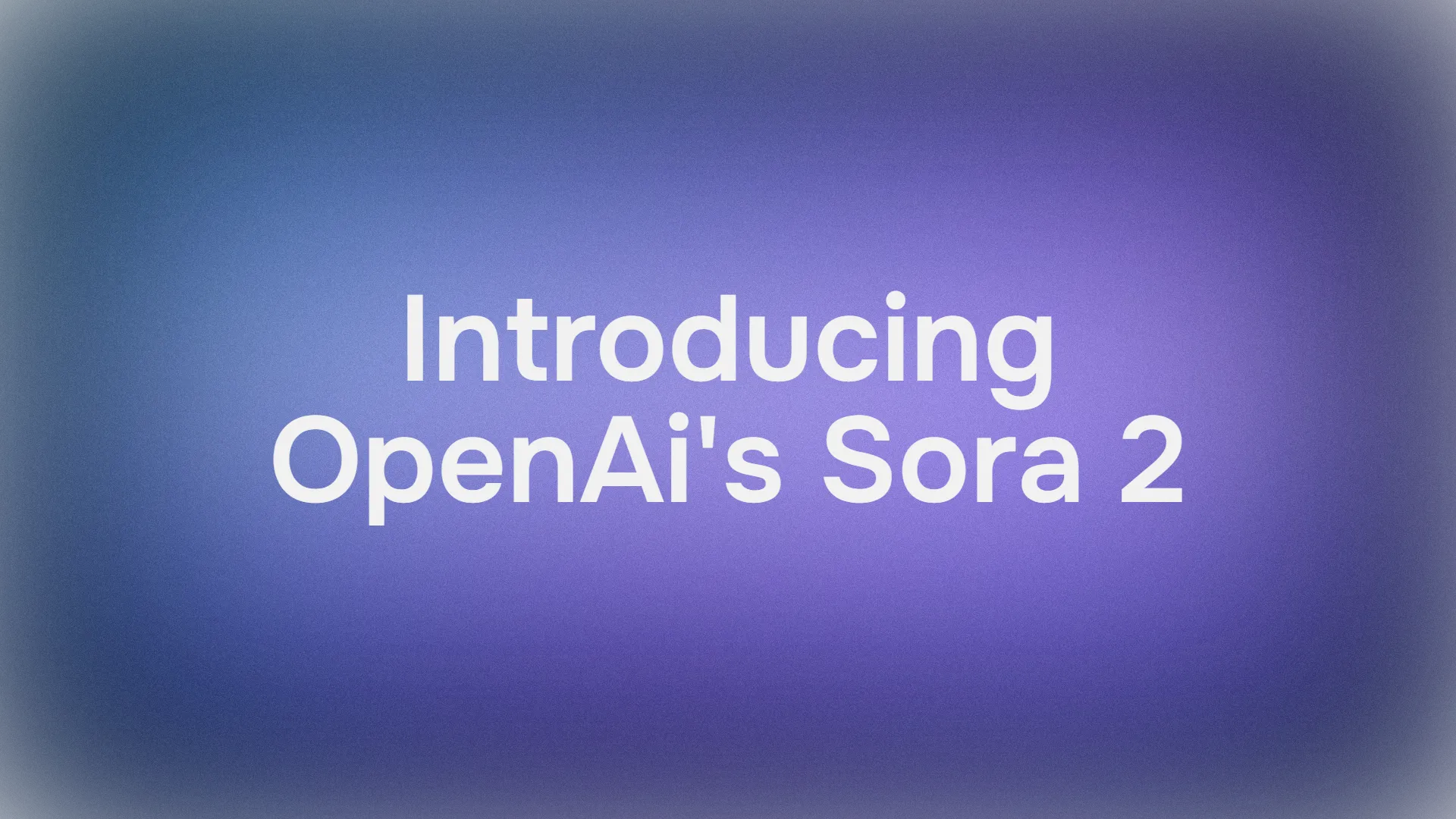In today’s fast-moving world of software development, speed and quality often clash. Testing has always been essential, but let’s face it—traditionally, it was slow, complex, and sometimes downright frustrating. The demand to deliver faster without sacrificing quality is higher than ever. Writing endless lines of code just to test other code? That’s like building a car just to see if your bike works.
Fortunately, things have changed. Thanks to low-code and no-code automation tools, testing is now faster, simpler, and—believe it or not—much more enjoyable. These tools let teams of all skill levels automate testing, speed up releases, and catch problems early in the development cycle.
But here’s the challenge: with so many options out there, how do you know which tools are actually worth using? If you want to boost your testing process without the headaches, you’re in the right place. This post will walk you through the top 10 low-code/no-code automation testing tools for 2025, breaking down their standout features and showing how they can help your team innovate with confidence.
Want an integrated, All-in-One platform for your Developer Team to work together with maximum productivity?
Apidog delivers all your demands, and replaces Postman at a much more affordable price!
Why Low Code/No Code Automation Testing Tools Are Essential Now
Traditional test automation requires developers or QA experts with scripting knowledge, which creates bottlenecks and slows feedback loops. Think about it: software development cycles are getting shorter, agile methodologies are everywhere, and businesses are under constant pressure to release features quickly. Low code/no code tools democratize automation by empowering a wider range of users business analysts, product managers, even developers with limited test automation skills to participate.
Instead of requiring deep coding knowledge, they let testers, business analysts, and even non-technical team members build and run automated tests using drag-and-drop interfaces, visual workflows, or simple configuration settings. In other words, testing isn’t just left to the developers; it becomes a team-wide activity.
Key Benefits of Low-Code/No-Code Automation Testing
So, why are these tools becoming so popular? Let’s break it down:
- Speed: Quickly create, run, and modify automated tests, you can set up automated tests in minutes rather than days.
- Accessibility: Build tests via visual interfaces and drag-and-drop flows, even non-developers can participate in quality assurance.
- Scalability: These tools allow testing at scale across browsers, devices, and APIs.
- Reduced Cost: Less coding means less training time and faster onboarding.
- Consistency: Automated workflows reduce the chance of human error.
- Collaboration: Teams work better together with shared, understandable test scenarios, business and tech teams can finally speak the same testing language.
- Maintenance: AI-powered self-healing features reduce flaky tests and upkeep.
- Broad coverage: Support for UI, API, mobile, and integration testing.
This means faster time to market, better product reliability, and freed-up engineering capacity for innovation.
What to Look for in a Low-Code/No-Code Automation Testing Tool
Before jumping into the list, here are some important features you should look for when choosing a low-code/no-code testing tool:
- Ease of Use: Is the interface intuitive for both technical and non-technical users?
- Cross-Platform Support: Can it test web, mobile, and desktop applications?
- Integration: Does it work well with your CI/CD pipeline, Git, or Jira?
- AI Assistance: Some tools now use AI to make test creation and maintenance easier.
- Scalability: Can it handle enterprise-level testing?
- Collaboration Features: Shared dashboards, reports, and workflows.
With that in mind, let’s explore the top 10 low-code and no-code automation testing tools.
1. Apidog
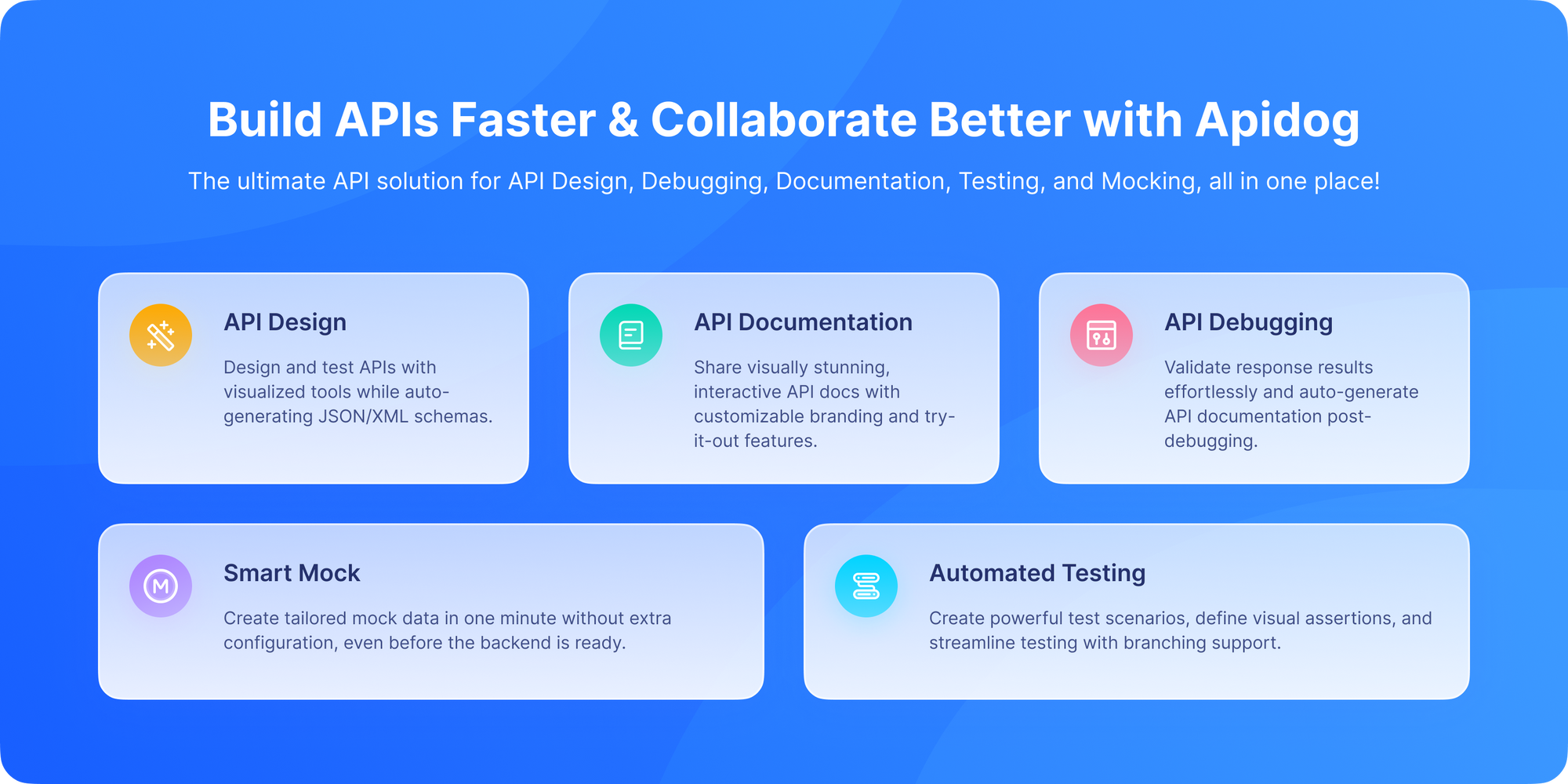
We’re kicking things off with Apidog, one of the most versatile platforms for API design, documentation, and testing. While it’s widely recognized as a complete API lifecycle management tool, its low-code API testing features truly stand out.
With Apidog, you can visually build test cases with little to no scripting, automate test execution, simulate endpoints with mock servers, and even monitor API performance—all within a single platform.
Why Apidog is a top choice for low-code API testing:
- Drag-and-drop workflows to design API tests quickly.
- Mock server support to simulate endpoints with ease.
- Automatic test case generation from your API definitions.
- Collaborative workspaces to align developers and testers.
- CI/CD integration for smooth automation in your pipeline.
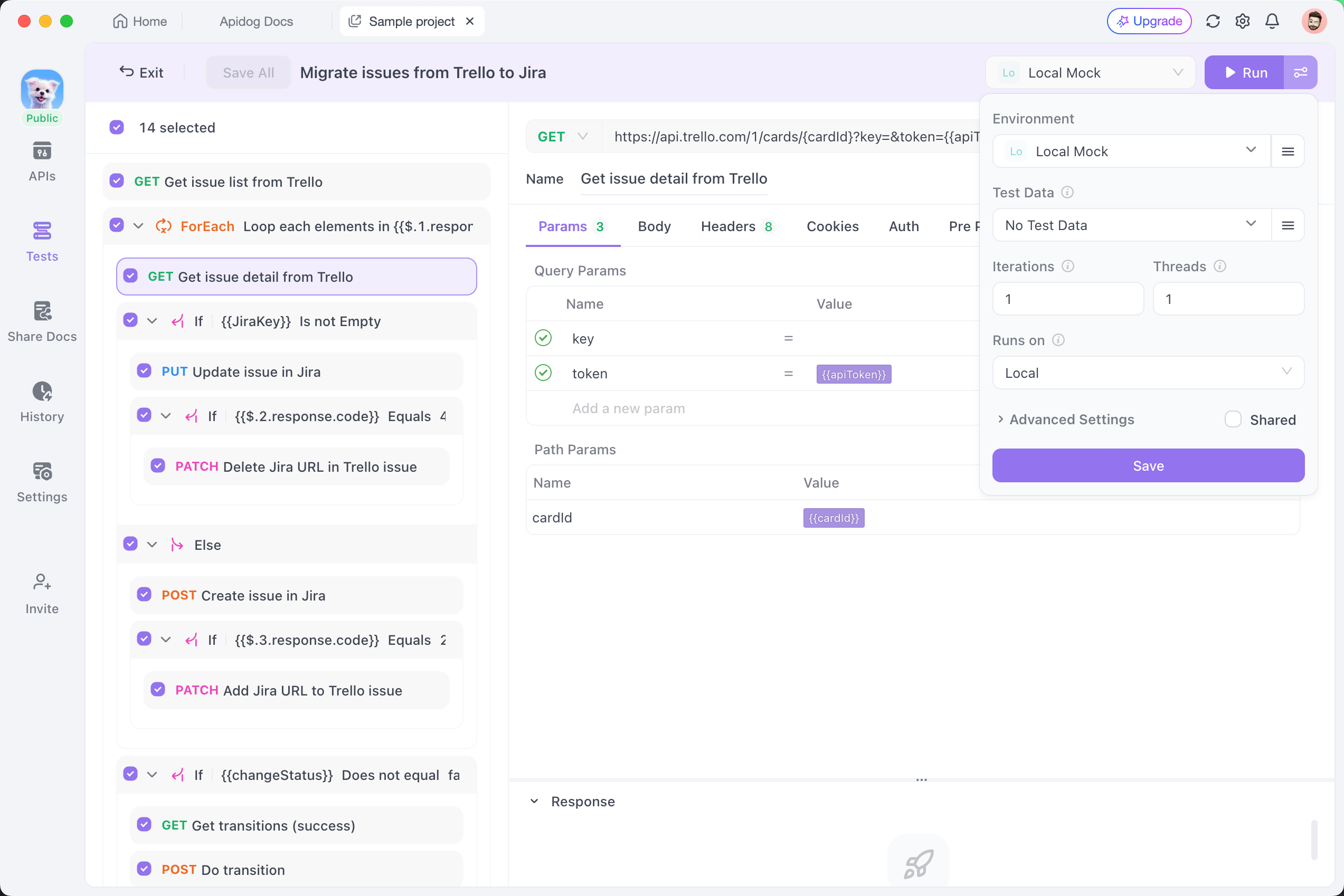
If your business relies heavily on APIs (and let’s face it, who doesn’t in 2025?), Apidog should be at the top of your list. It reduces the complexity of API automation and gives both coders and non-coders the tools they need to ensure reliability.
2. Testim
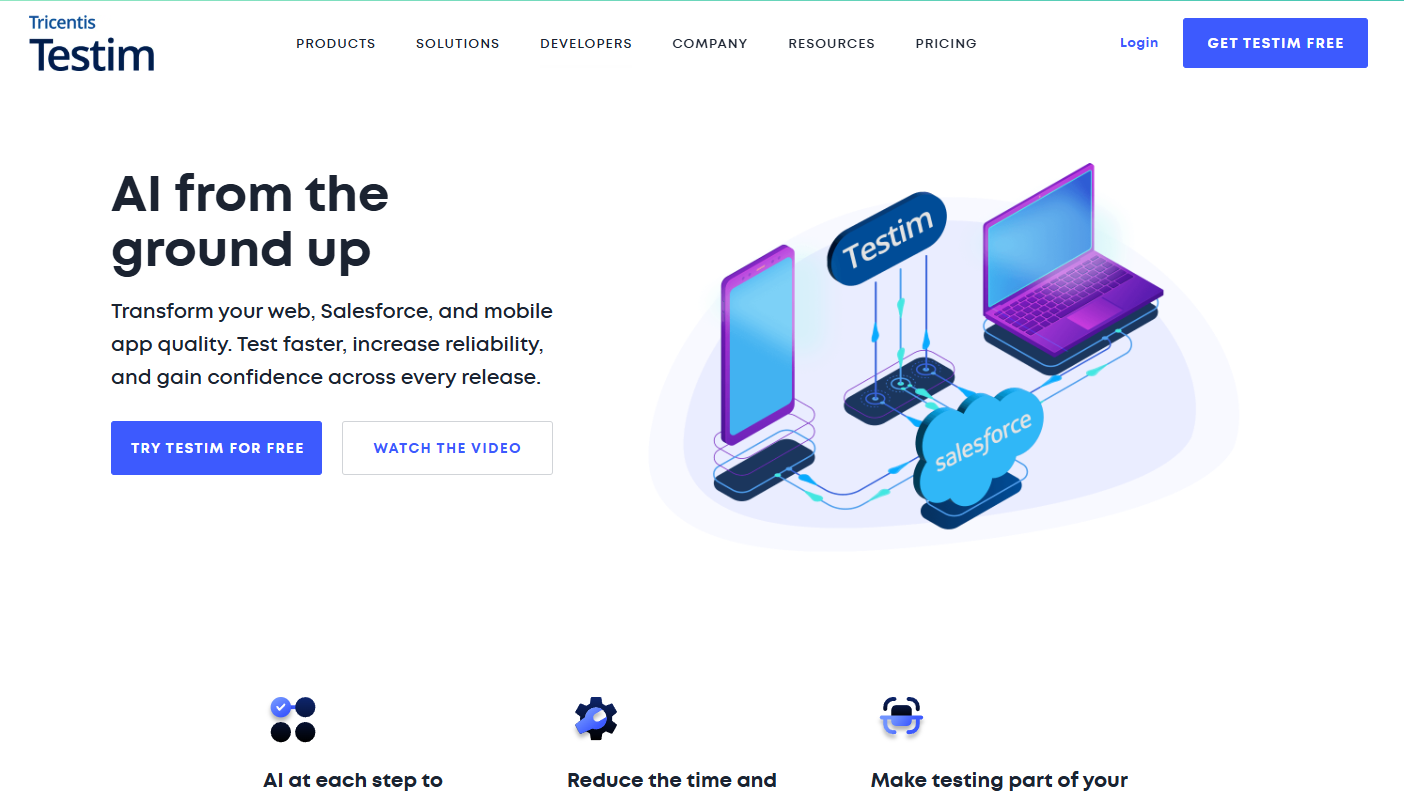
Testim uses AI-powered test automation with a no code editor, enabling users to create, run to simplify test creation and maintenance easily. It’s primarily aimed at web applications and supports both coded and no-code options. The AI-powered locator management drastically reduces flaky tests, improving reliability especially for agile teams moving fast.
Feature Highlights:
- Create tests with a Chrome extension.
- AI-based stabilization reduces flaky tests.
- Strong CI/CD integration.
3. Katalon Studio
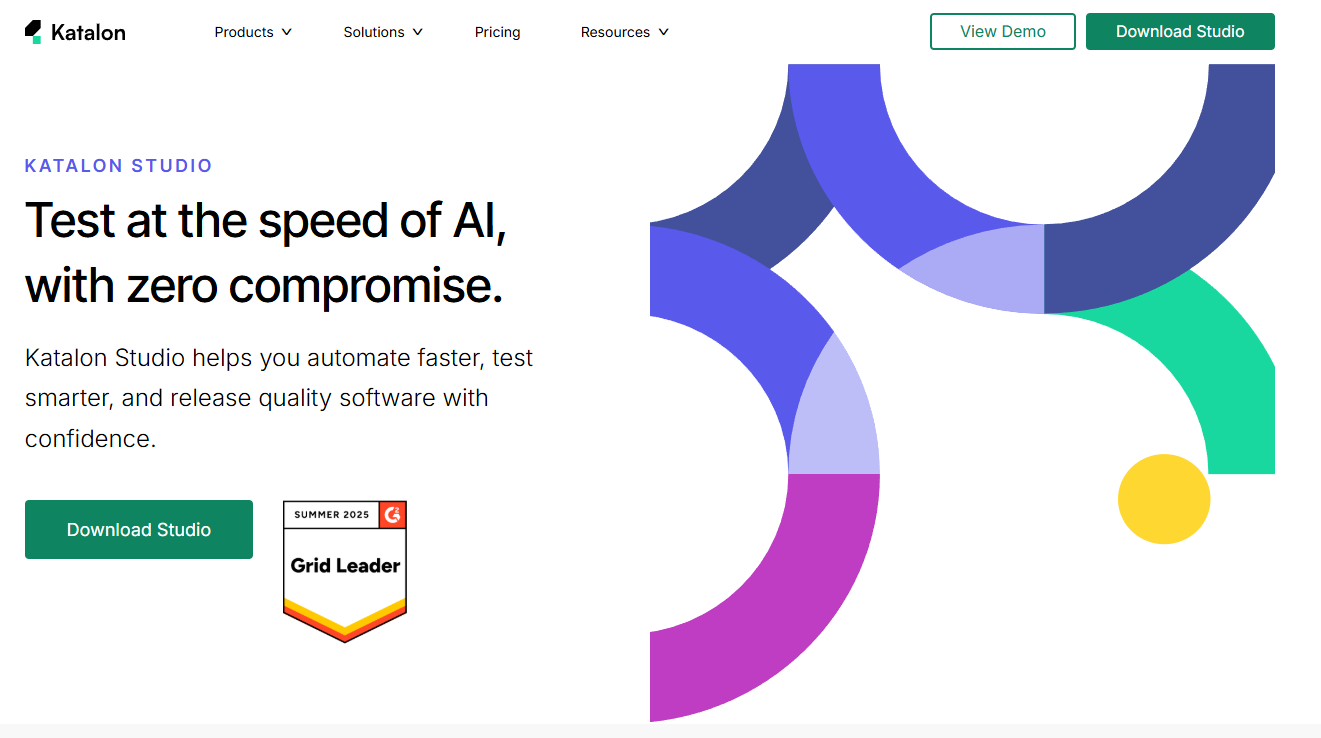
A fan favorite, Katalon Studio is a popular choice for low code testing automation platform for web, mobile, desktop, and APIs. It blends low-code scripting with advanced capabilities, making it flexible for both beginners and experts. It offers record-and-playback capabilities and built-in keyword-driven testing that makes automation approachable. Plus, it integrates with CI/CD pipelines to facilitate continuous testing efforts.
Feature Highlights:
- Unified platform for multi-platform testing.
- Record-and-playback features for no-code testers.
- Data-driven testing support.
- Free and paid versions available.
4. Leapwork
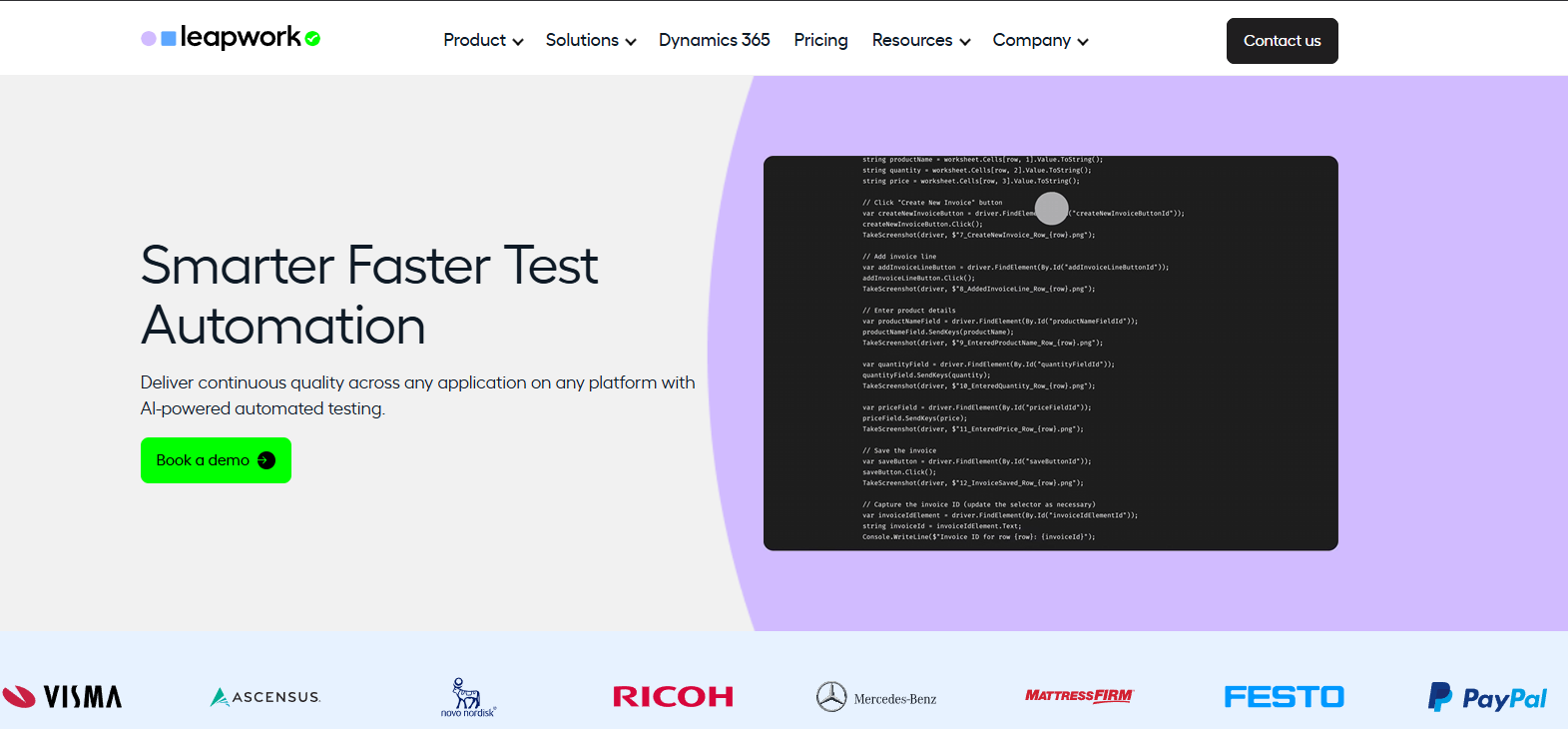
Leapwork markets itself as a true no-code test automation tool, focusing on visual workflows. Testers can design automation simply by connecting blocks. Leapwork’s visual flowchart-based no code automation uniquely appeals to business users and testing professionals alike. Its modular design and integration with RPA and CI tools make it versatile for complex testing scenarios.
Feature Highlights:
- 100% visual interface.
- Wide support for web, desktop, and Citrix.
- Built-in reporting dashboards.
- Great for teams with little coding knowledge.
5. ACCELQ
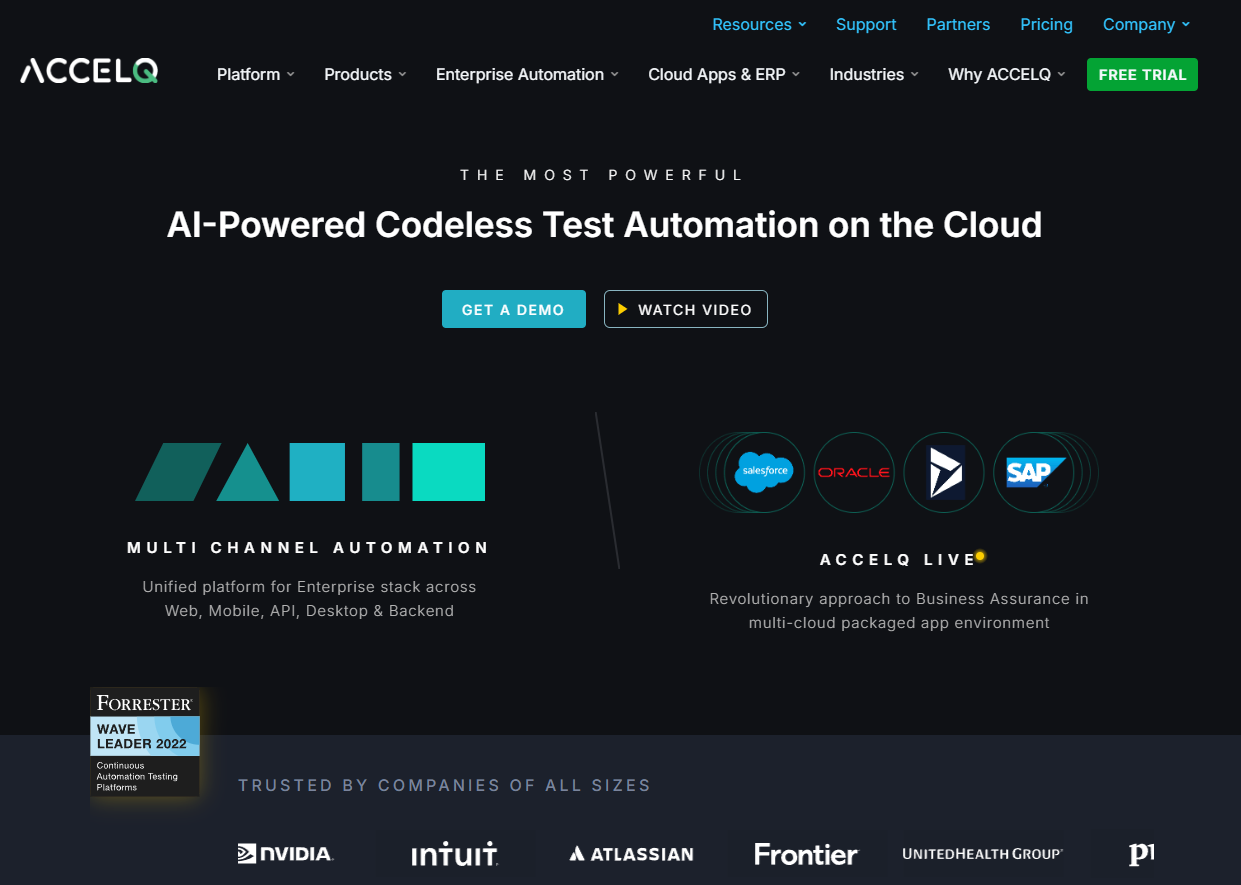
ACCELQ is a cloud-based AI-driven test automation platform. It’s strong in continuous testing for agile and DevOps workflows.
Feature Highlights:
- Cloud-native, no infrastructure setup needed.
- Codeless automation for API, web, and mobile.
- Advanced CI/CD pipeline integrations.
6. Ranorex Studio
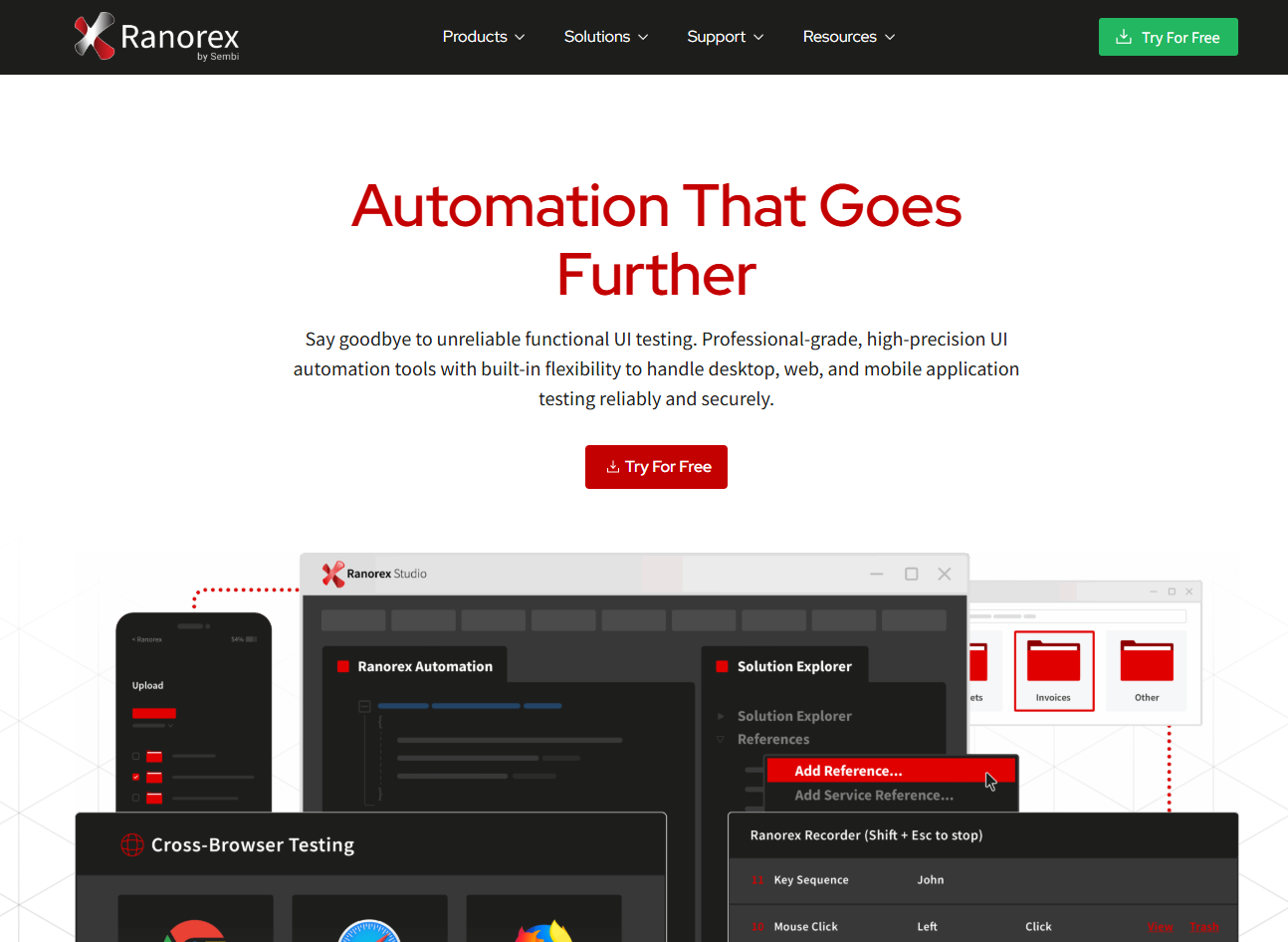
Ranorex is known for desktop, web, and mobile application testing. It has a low-code interface but also supports coded extensions for flexibility. Its drag-and-drop interface paired with script optimization caters to both technical and non-technical testers. Rich reporting and debugging tools make problem solving more efficient.
Feature Highlights:
- Record-and-replay features.
- Robust object recognition for UI testing.
- Integrates well with Jira, Jenkins, and Git.
7. Tricentis Tosca
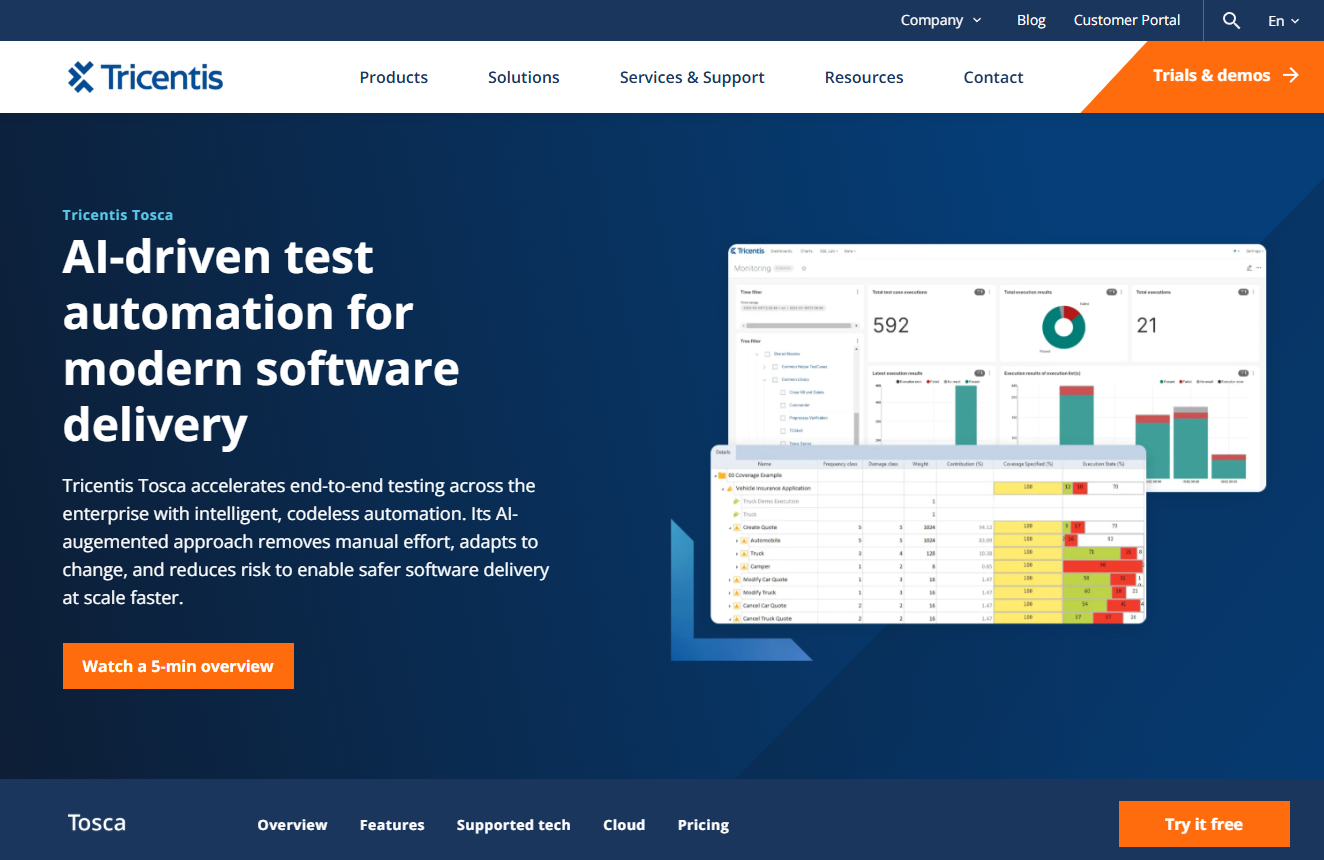
Tricentis Tosca is an enterprise-grade automation testing tool with strong no-code capabilities. It’s particularly popular in industries like banking and healthcare. Tosca targets enterprises with model-based testing that minimizes scripting while supporting broad automation across APIs, UIs, and enterprise apps. It specializes in risk-based testing for optimized coverage and governance.
Feature Highlights:
- Supports risk-based testing.
- Scales easily for large enterprises.
- Automates across legacy systems, APIs, and UIs.
8. TestProject
TestProject offers a free, cloud-based platform with strong low code features including a recorder and shared addons. A community-driven no-code test automation platform, TestProject makes it easy for teams to collaborate on testing across different environments. Supporting API, web, and mobile testing, it’s an excellent fit for teams looking to start automated tests without investment.
Feature Highlights:
- 100% free for individuals.
- Browser-based test recorder.
- Cloud and local execution.
9. mabl
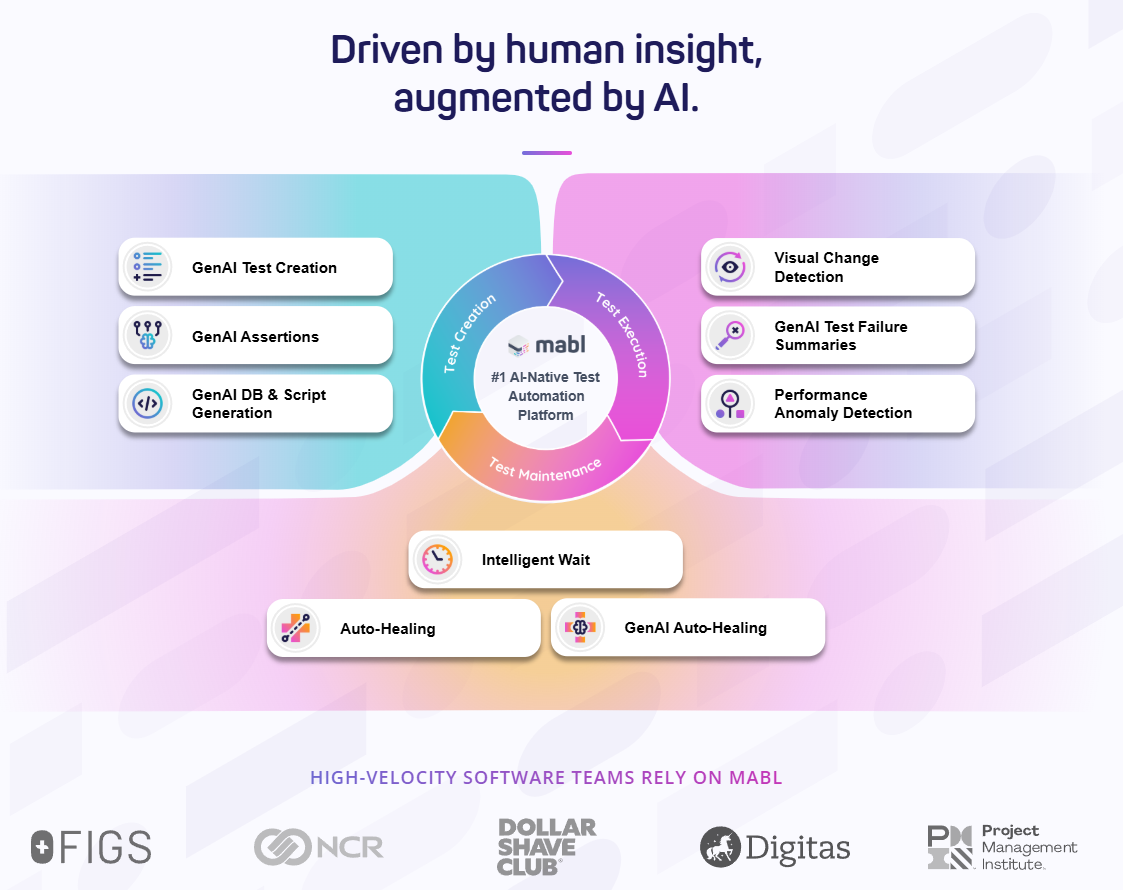
mabl is a low-code intelligent test automation tool powered by AI. It’s designed for web apps, with strong support for visual and functional testing. mabl focuses on AI-powered cloud testing with codeless creation and self-healing tests. It’s particularly strong in functional UI testing, enabling agile teams to embed testing early and often.
Feature Highlights:
- Auto-healing tests powered by AI.
- Great for continuous testing.
- Rich reporting and analytics.
10. Perfecto
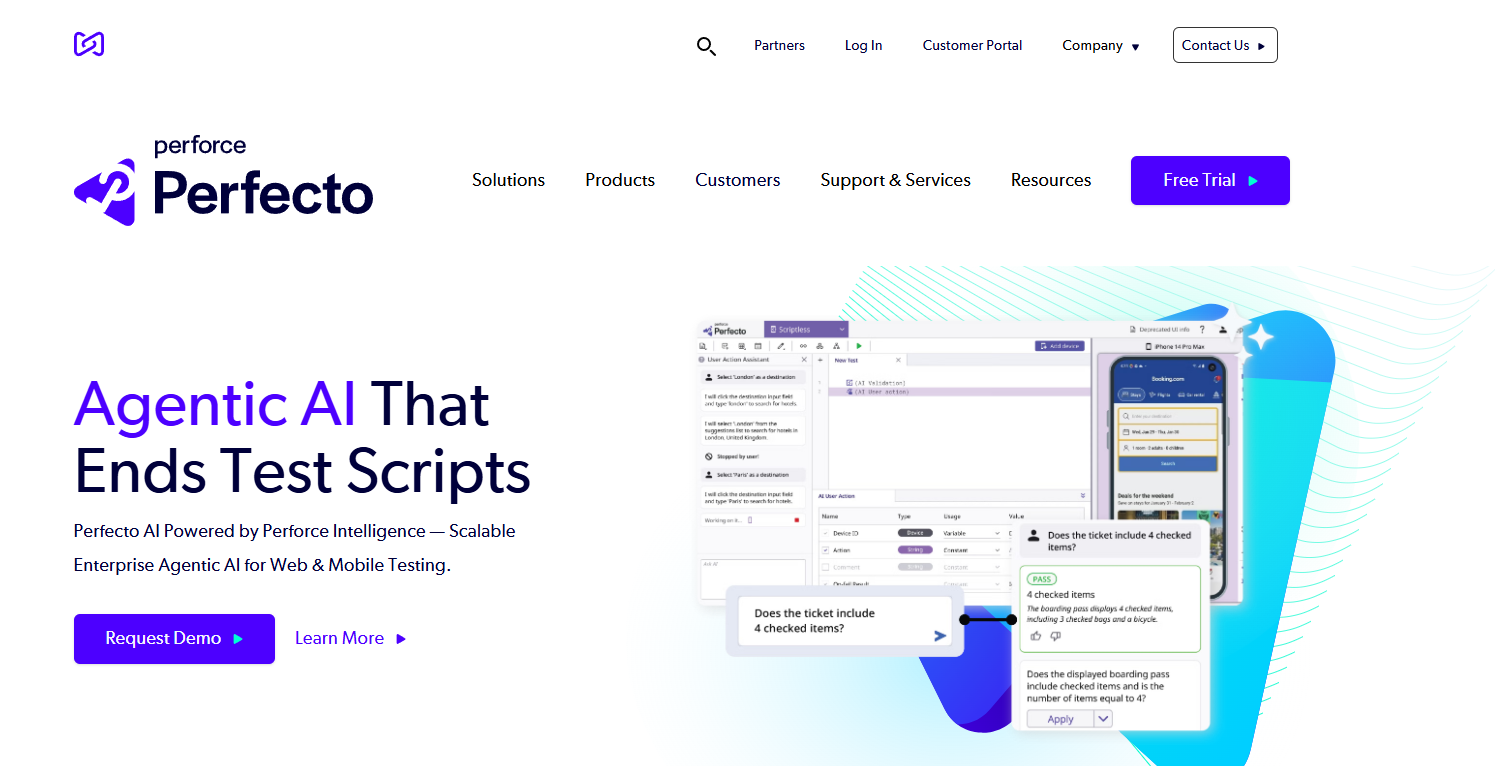
Perfecto is a cloud-based test automation platform with no-code options, especially strong in mobile testing.
Feature Highlights:
- Real device cloud for mobile testing.
- Support for both coded and no-code tests.
- Advanced analytics and debugging.
How to Choose the Right Tool for Your Team
When evaluating low-code/no-code testing tools, consider:
- What platforms do you need to test (API, web, mobile, desktop)?
- Who will be creating and maintaining tests (developers, QA, business users)?
- How critical is integration with your CI/CD tools?
- Does the tool support AI-powered maintenance for flaky test reduction?
- What collaboration features (shared scenarios, dashboards) are available?
- Pricing models and scalability for your team size.
Why Apidog Is a Must-Have for API Testing in 2025
Apidog goes beyond low-code API testing—it brings together design, documentation, mock servers, and debugging in one modern platform. This all-in-one approach cuts down on context switching and helps teams deliver APIs faster with confidence. On top of that, its collaborative tools make API testing a shared responsibility, involving not just developers but also product managers and QA teams. The result? Faster feedback loops and smoother releases.
Challenges of Low-Code/No-Code Testing
While these tools are fantastic, they’re not magic. You might still face challenges like:
- Customization Limits: Some tools can’t handle very complex scenarios.
- Learning Curves: Even no-code tools require some training.
- Vendor Lock-In: Switching tools later can be tricky.
- Scaling Costs: Enterprise features often come at a premium.
Future Trends in Low-Code and No-Code Testing
Here’s what we can expect in the next few years:
- AI-Powered Testing: Tools will automatically generate and maintain tests.
- More API-Focused No-Code Tools: Like Apidog, expect API testing to get even more no-code options.
- Increased Collaboration Features: Business users and testers will co-own quality assurance.
- Integration-First Platforms: Tools will integrate even deeper into DevOps workflows.
- More Industry-Specific Solutions: Specialized tools for healthcare, finance, etc.
Final Thoughts
The rise of low-code and no-code automation testing tools marks a major shift toward democratizing quality assurance. Low-code and no-code automation testing tools are no longer optional, they’re essential for modern development teams. They speed up testing, reduce bottlenecks. By empowering more people on your team to own testing, you increase coverage, reduce errors, and speed delivery cycles from QA engineers to business analysts.
If you’re looking for the right fit, this top 10 list should give you plenty to consider. And if APIs are central to your workflow, don’t overlook Apidog. It’s a powerful, low-code solution for API automation testing that combines design, documentation, and testing in one easy-to-use package. You’re ready to transform your testing strategy.
Start today by downloading Apidog for free and experience smarter, faster, and more collaborative API testing, all without heavy coding burdens.



